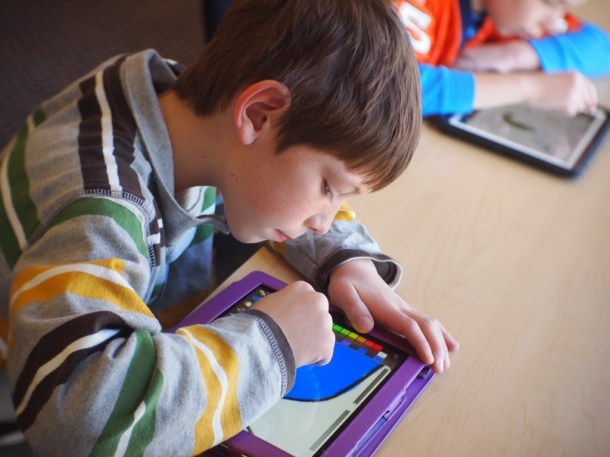Researchers at the University of California have demonstrated the positive effects of the use of tablets in education, specifically in children with autism.
Tablets are taking on a more and more important role in education. They are seen as the electronic teaching tools of the future, and different studies have analysed their influence on skills such as memory, reading comprehension, creativity, and motivation of students.
But their use can be extended even further. And the thing is that these mobile devices can also be a big help for children with autism, a disorder that directly affects social activity, communication skills, and behaviour. The term autism spectrum disorder refers to a variety of different syndromes, such as Asperger’s, Rett’s, as well as classic autism.
How can the use of tablets in therapy influence autistic children? To understand its effects, researchers at the University of California decided to use iPads as a supplementary tool in the normal treatments of these kids. The children who participated were between the ages of 5 and 8 and had a serious problem: they only knew and understood fewer than 20 words.

These language difficulties are observed in 30% of the cases of people diagnosed with autism spectrum disorder. Psychology has different ways of treating these children, with personalised therapy and games, and in some cases, specific medication is used.
The US scientists wanted to test whether, as it appears, tablet in education have a positive influence on special students such as the children with autism, with alterations in speech, school performance, motor skills, and even cognitive abilities.
The first tests lasted three months, and in the study, researchers divided the students into two groups: those who used the iPad as a supplementary tool for therapy and games, and those who did not use any tablet. The first group of students experienced a clear improvement in 78% of the cases, with this percentage dropping to 62% in the children who did not use the iPad.

In the second group, if students didn’t show any type of improvement, scientists began a second period in which they introduced the iPad as a supplementary tool. The improvement in performance, although it was present, was not as clear as in the case of children who had used the device from the start.
In addition to exercising a positive influence, tablets in education also helped students with autism to improve their skills. As Connie Kasari, one of the researchers in the project, explains, “using the iPad helped attract the attention of these kids, encouraging them to start conversations and helping them to learn and improve the pronunciation of new words».
The use of new technologies and devices in the classroom will undoubtedly bring significant changes to education in the 21st century. As tools to supplement traditional resources, tablets can be a big help to all students, including children with special needs, such as those with autism.
Images | Brad Flickinger I (Flickr), Brad Flickinger II (Flickr), World Bank Photo Collection (Flickr)







